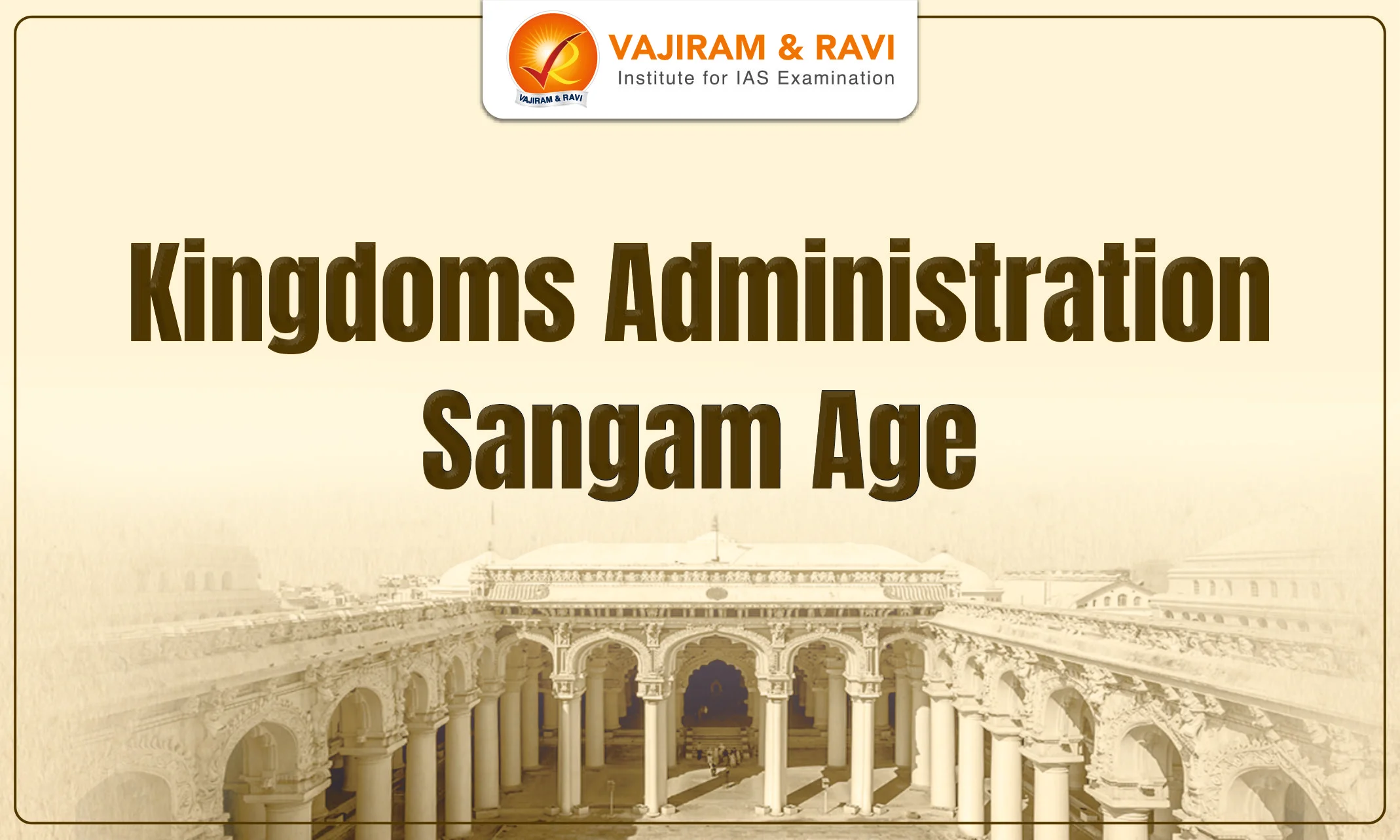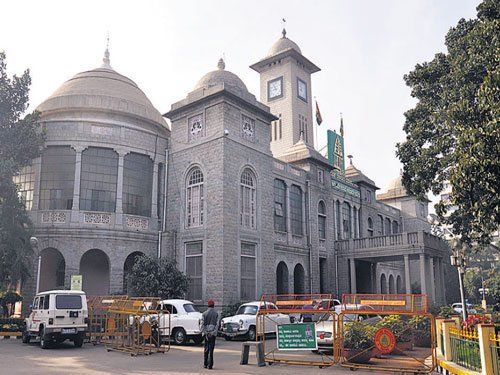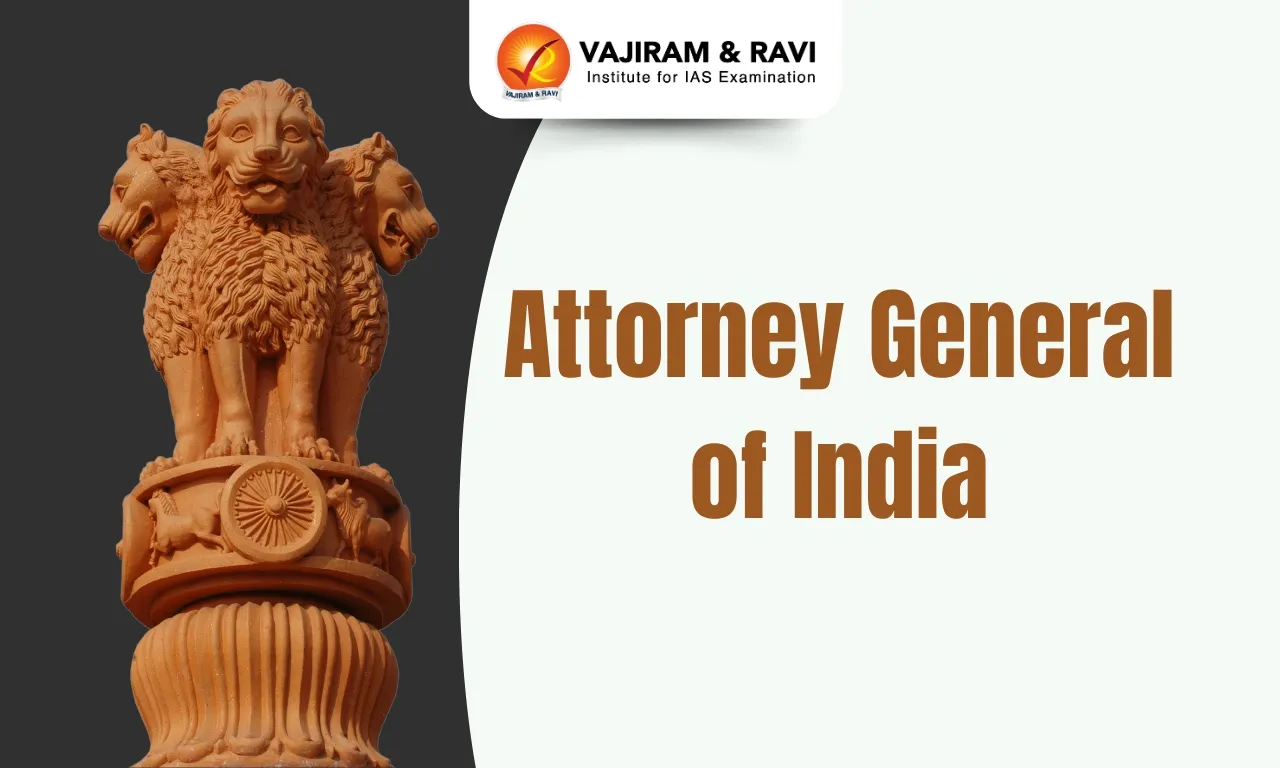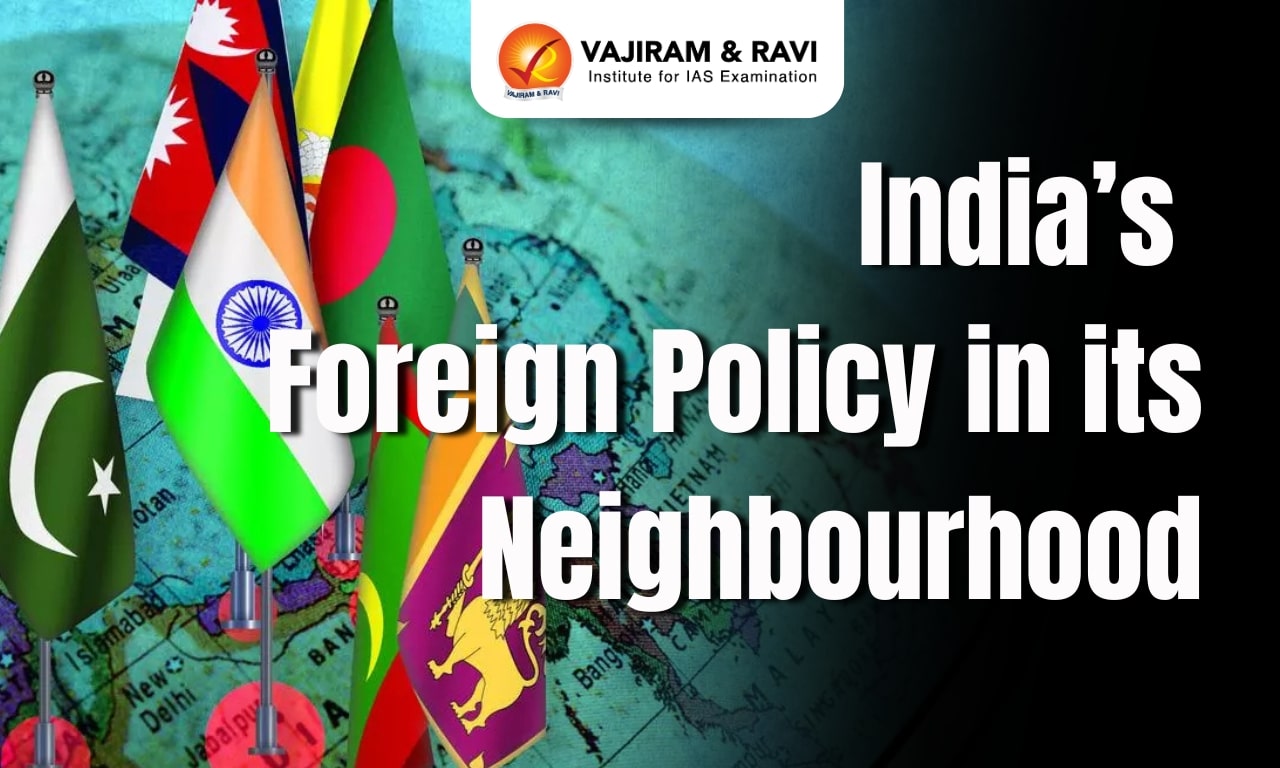What is the Sangam Age?
The Sangam Age, also known as the Tamil Sangam period, was a significant era in the history of South India. This period is named after the Sangam, which was a gathering of Tamil poets and scholars who lived in the southern part of India. The Sangam period is generally believed to have lasted from 300 BCE to 300 CE.
Sangam Assemblies
According to Tamil legends, there existed three Sangams (Academy of Tamil poets) in ancient Tamil Nadu, popularly called Muchchangam (three Sangams). All these three Sangams flourished under the royal patronage of the Pandyas.
| Sangam | Place | Attended by | Important work |
| First Sangam | Ten-Madurai | Attended by gods and legendary sages and presided over by Agastasya (Agattiyar) | No literary work of this Sangam was available. Agayattiyam is considered to be the earliest no-extant Tamil work composed during this period. |
| Second Sangam | Kapadapuram | Attended by kings and poets and presided by Tolkappiyar | All the literary works had perished except Tolkappiyam. |
| Third Sangam | New Madurai | Founded by Mudathirumaran and was attended by a large number of poets and presided over by Nakkirar. | Eight anthologies are known as Ettuttokoi/Ettuthokai, ten idylls are known as Pattuppattu. Five epics are known as Aimperunkappiyam |
Table: Sangam assemblies
Kingdoms during Sangam Age
During the Sangam Age, the Tamil country was ruled by three dynasties, namely the Chera, Chola and Pandyas. They were together, also known as Muvendar. The political history of these dynasties can be traced from the literary references.
| Kingdom | Ruling region | Capital | Emblem | First ruler | Important Sea ports |
| Chera | Modern Kerala | Vanji | Bow | Udayancheral | Tondi and Musiri |
| Chola | From modern Tiruchi district to southern Andhra Pradesh. (between Pennar and Vellar rivers) | Uraiyur (later shifted to Puhar by Karikala) | Tiger | Elara | Poompuhar (Kaveripattanam) |
| Pandya | Present day south Tamil Nadu | Madurai (On the banks of River Vaigai) | Fish (carp) | Mudukudumi | Korkai |
Table: Sangam Kingdoms
Cheras
- Works mentioning Chera kings:
- Pugalur inscription refers to three generations of Chera rulers.
- Pathitrupathu speaks of eight Chera kings, their territory and their fame.
- Famous rulers: Perum Sotru Udhiyan Cheralathan, Imayavaramban Nedum Cheralathan and Cheran Senguttuvan.
- Titles: The Chera kings assumed titles like Vanavaramban, Vanavan, Kuttuvan, Irumporai and Villavar.
- Cheran Senguttuvan:
- He belonged to the 2nd century A.D. and his expedition to the Himalayas was remarkable (mentioned in Silappathikaram). He defeated many north Indian monarchs.
- He introduced the Pattini cult, or the worship of Kannagi as the ideal wife in Tamil Nadu.
- Gajabhagu II from Sri Lanka was a contemporary of him (confirmed by Silappathigaram, Dipavamsa and Mahavamsa).
- Coinage: Some Cheras issued copper and lead coins, with Tamil-Brahmi legends, imitating Roman coins. There are many other Chera coins with their bow and arrow emblem but without any writing on them.
- External contacts: The Romans set up two regiments at Muzris. They also built a temple of Augustus at Muzris.
Cholas
- Titles: The Chola kings assumed titles like Senni, Valavan and Killi.
- Karikala:
- Pattinappalai portrays his early life and his military conquests.
- In the Battle of Venni, he defeated the mighty confederacy consisting of the Cheras, Pandyas and eleven minor chieftains, and in the Battle of Vahaipparandalai, he defeated nine enemy chieftains.
- He was responsible for the reclamation of forest lands and brought them under cultivation, thus adding prosperity to the people.
- He also built the Kallanai dam across the river Kaveri and also constructed many irrigation tanks.
Pandyas
- Famous kings: Nediyoan, Palyagasalai Mudukudumi Peruvaludhi and Mudathirumaaran.
- Aryappadai Kadantha Neduncheliyan won victories over the Aryan forces. He was responsible for the execution of Kovalan, for which Kannagi burnt Madurai (Silappadikaram).
- Thalaiyalanganaattu Cheruvendra Neduncheliyan won the battle at Talaiyalanganam against the combined army of the Chera, the Chola and five Velir chieftains and wore the title of Talaiyalanganattu.
- The last famous Pandyan king was Uggira Peruvaludhi. The Pandyan rule during the Sangam Age began to decline due to the invasion of the Kalabhras.
- Titles: Pandya kings assumed the titles like Thennavar and Minavar.
- Maduraikkanji, written by Mangudi Maruthanar, describes the socio-economic condition of the Pandya country, including the flourishing seaport of Korkai.
- They sent emissaries to Roman emperors Augustus and Trajan.
Minor Kingdoms
The minor chieftains played a significant role in the Sangam period.
- Pari, Kari, Ori, Nalli, Pegan, Ay and Adiyaman: popular for their philanthropy and patronage of Tamil poets and known as Kadai Yelu Vallalgal.
- Although they were subordinate to the Chera, Chola and Pandya rulers, they were powerful and popular in their respective regions.
Sangam Polity and Administration
- Form of government: Generally, hereditary monarchy was followed. The king also took the advice of his ministers, court poets and the imperial court or ‘Avai’.
- Administration: The kingdom was divided into Mandalam (Territory), Nadu (province), Ur (town), Perur (big village), and Sirur (small village) for administrative convenience.
- Terms related to towns: Pattinam (coastal town), Puhar (harbour areas), Cheri (a suburb of town)
- Officials: The king was assisted by a large body of officials who were divided into five councils. They were ministers (amaichar), priests (anthanar), military commanders (senathipathi), envoys (thuthar) and spies (otrar).
- Thinai classification: Three levels of rulers are found:
- Kizhar: heads of the villages or a small territory, later known as nadu.
- Velir: controlled the territories of varied geographical nature, mainly hilly and forest areas.
- Vendar: kings controlling larger, fertile territories.
- Military administration: It was efficiently organized, and each ruler had a regular army and their respective Kodimaram (tutelary tree).
- Revenue Administration:
- Land revenue was the chief source of the state’s income, while customs duty was also imposed on foreign trade.
- The Pattinappalai refers to the customs officials employed in the seaport of Puhar. Booty captured in wars was also a major income to the royal treasury
- Terms related to taxes:
- Karai – land tax
- Ulgu – custom duties
- Iravu – Forced gift/extra demand
- Irai – tribute paid by feudatories
- Variyar – Tax collector
Sangam Economy
- Agriculture:
- Agriculture was the chief occupation during the Sangam period.
- Crops: Rice, ragi, sugarcane, cotton, pepper, ginger, turmeric, cinnamon and fruits were widely cultivated. Jackfruit and pepper were famous in Chera country. Paddy was the chief crop in the Chola and Pandya countries.
- Handicrafts Industry:
- Activities: Weaving, metal works and carpentry, shipbuilding and the making of ornaments using beads, stones and ivory were practised.
- Major craft production centres: Arikamedu, Uraiyur, Kanchipuram, Kaviripattinam, Madurai, Korkai, and Pattanam in Kerala were the important craft production centres.
- The spinning and weaving of cotton and silk clothes attained a high quality.
- There was a great demand in the Western world for cotton clothes woven at Uraiyur.
- Trade:
- Internal trade: It was mostly carried through the barter system. Maduraikanchi mentions both day and night markets that sell various craft items.
- External trade:
- It was carried between South India and the Greek kingdoms.
- Ports: The port city of Puhar (an emporium of foreign trade), Tondi, Musiri, Korkai, Arikkamedu and Marakkanam.
- Source: The author of Periplus provides the most valuable information on foreign trade. Gold and silver coins issued by Roman emperors have been discovered around Tamil Nadu.
- Exports: cotton fabrics, spices like pepper, ginger, cardamom, cinnamon and turmeric, ivory products, pearls and precious stones.
- Imports: Gold, horses and sweet wine.
- Trade-related terms: vanikan (Trader), chattan, nigama, umanar (salt merchants), chattu (mobile merchants).
Sangam Society
The society during Sangam was characterised by a well-defined social structure, gender equality to some extent. The society was organised into different strata or divisions based on occupation and land.
Social structure:
- Tolkappiyam refers to a five-fold division of lands:
| Land type (Panchitanai) | Chief deity | Chief occupation | Inhabitants |
| Kurinji (hilly tracks) | Murugan | hunting and honey collection | Kurvar, Vetar |
| Mullai (pastoral) | Mayon (Vishnu) | cattle-rearing and dealing with dairy products | Eyinar, Maravar |
| Marudam (agricultural) | Indira | agriculture | Ayar, Idaiyar |
| Neydal (coastal) | Varunan | fishing and salt manufacturing | Ulavar, Vellalar |
| Palai (desert) | Korravai | robbery | Paratavar, Valayar |
Table: Ecological divisions in the Sangam period
- Caste system:
- Tolkappiyam also refers to four castes:
| Caste | Associated |
| Arasar | ruling class |
| Anthanar | polity and religion |
| Vanigar | trade and commerce |
| Vellalar | agriculturists |
Table: Occupations of various castes during the Sangam period
- Terms:
- Kadaisiyar and Adimai: Landless labourers, including slaves.
- Pariyars: agriculturist labourers
- Other tribal groups: Parathavar, Panar, Eyinar, Kadambar, Maravar, Pulaiyar, Thodas, Irulas, Nagas and Vedars.
Position of Women
- Freedom: Women in Sangam society had greater freedom and autonomy compared to their counterparts in many other ancient civilisations. Women were also involved in literary work, dance and music.
- Marriage: Love marriage was a common practice. Women were allowed to choose their life partners. However, the life of widows was miserable.
- Poets: Tamil poets like Avvaiyar, Nachchellaiyar, and Kakkaipadiniyar flourished in this period.
- The practice of Sati was also prevalent in the higher strata of society.
- Karpu or Chaste life was considered the highest virtue of women.
Sangam Religion
- Primary deity: Seyon or Murugan: He was honoured with six abodes known as Arupadai Veedu.
- Other gods: Mayon (Vishnu), Vendan (Indiran), Varunan and Korravai.
- Hero Stone or Nadu Kal worship: The Hero Stone was erected in memory of the bravery shown by the warrior in battle.
Decline of Sangam Age
- Invasion of Kalabhras: Kalabhras occupied the Tamil country for about two and a half centuries, which disrupted the social and political fabric of South India. Their rule has been called an interregnum or ‘dark age’ by earlier historians. However, the greatest Tamil work, Tirukkural, was written during this period.
- Period of transition: After the 3rd century AD, there was a period of transition, leading to enlarged state societies under the Pallavas ruling over northern Tamilnadu and the Pandyas in the south from the sixth century onwards.
Map: Sangam Age
Last updated on December, 2025
→ Check out the latest UPSC Syllabus 2026 here.
→ Join Vajiram & Ravi’s Interview Guidance Programme for expert help to crack your final UPSC stage.
→ UPSC Mains Result 2025 is now out.
→ UPSC Notification 2026 is scheduled to be released on January 14, 2026.
→ UPSC Calendar 2026 is released on 15th May, 2025.
→ The UPSC Vacancy 2025 were released 1129, out of which 979 were for UPSC CSE and remaining 150 are for UPSC IFoS.
→ UPSC Prelims 2026 will be conducted on 24th May, 2026 & UPSC Mains 2026 will be conducted on 21st August 2026.
→ The UPSC Selection Process is of 3 stages-Prelims, Mains and Interview.
→ UPSC Result 2024 is released with latest UPSC Marksheet 2024. Check Now!
→ UPSC Prelims Result 2025 is out now for the CSE held on 25 May 2025.
→ UPSC Toppers List 2024 is released now. Shakti Dubey is UPSC AIR 1 2024 Topper.
→ UPSC Prelims Question Paper 2025 and Unofficial Prelims Answer Key 2025 are available now.
→ UPSC Mains Question Paper 2025 is out for Essay, GS 1, 2, 3 & GS 4.
→ UPSC Mains Indian Language Question Paper 2025 is now out.
→ UPSC Mains Optional Question Paper 2025 is now out.
→ Also check Best IAS Coaching in Delhi
Sangam Age FAQs
Q1. Who was the author of Silapathikaram?+
Q2. Which are the important excavation sites of the Sangam Age? +
Tags: quest sangam age

















